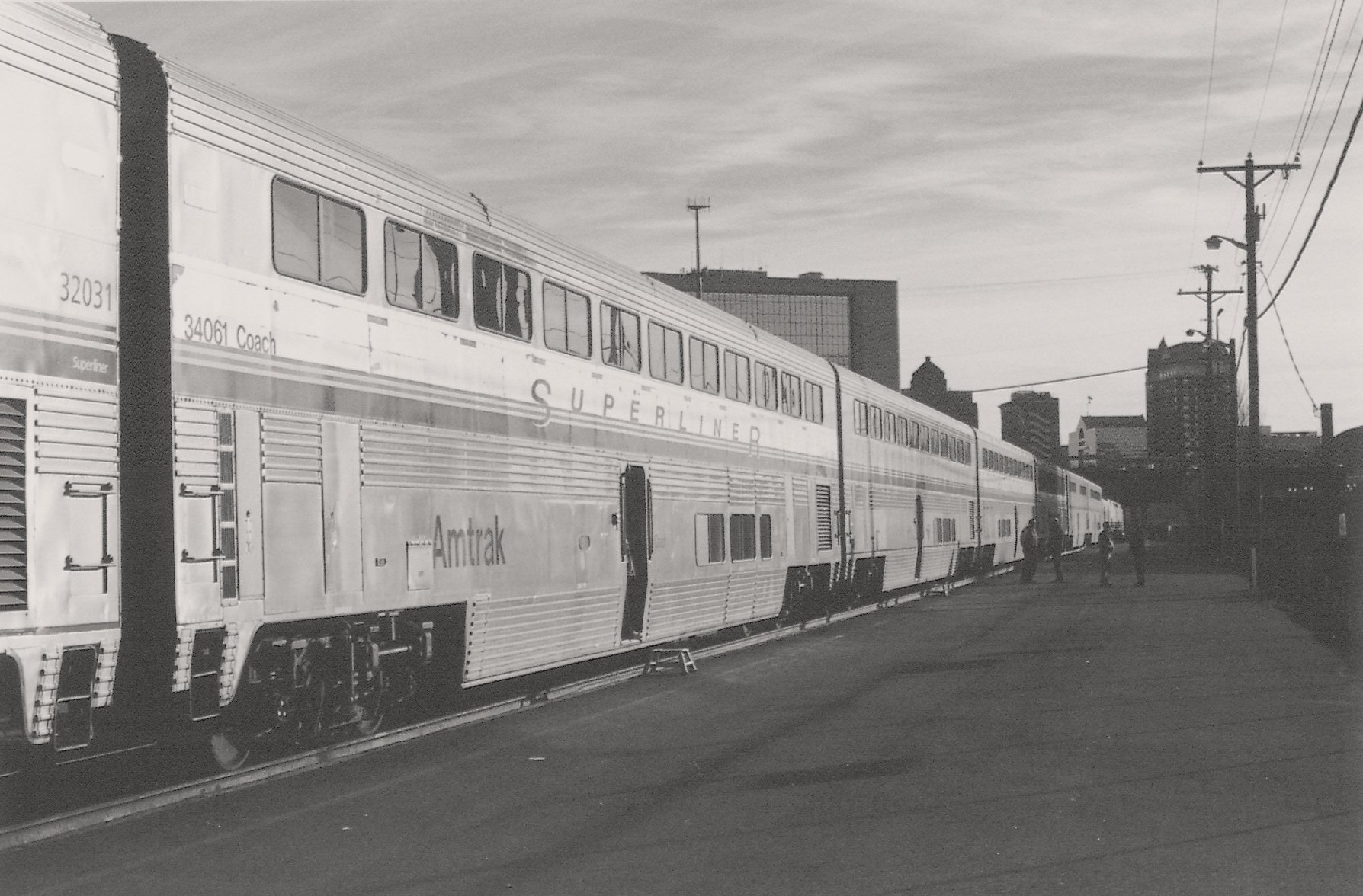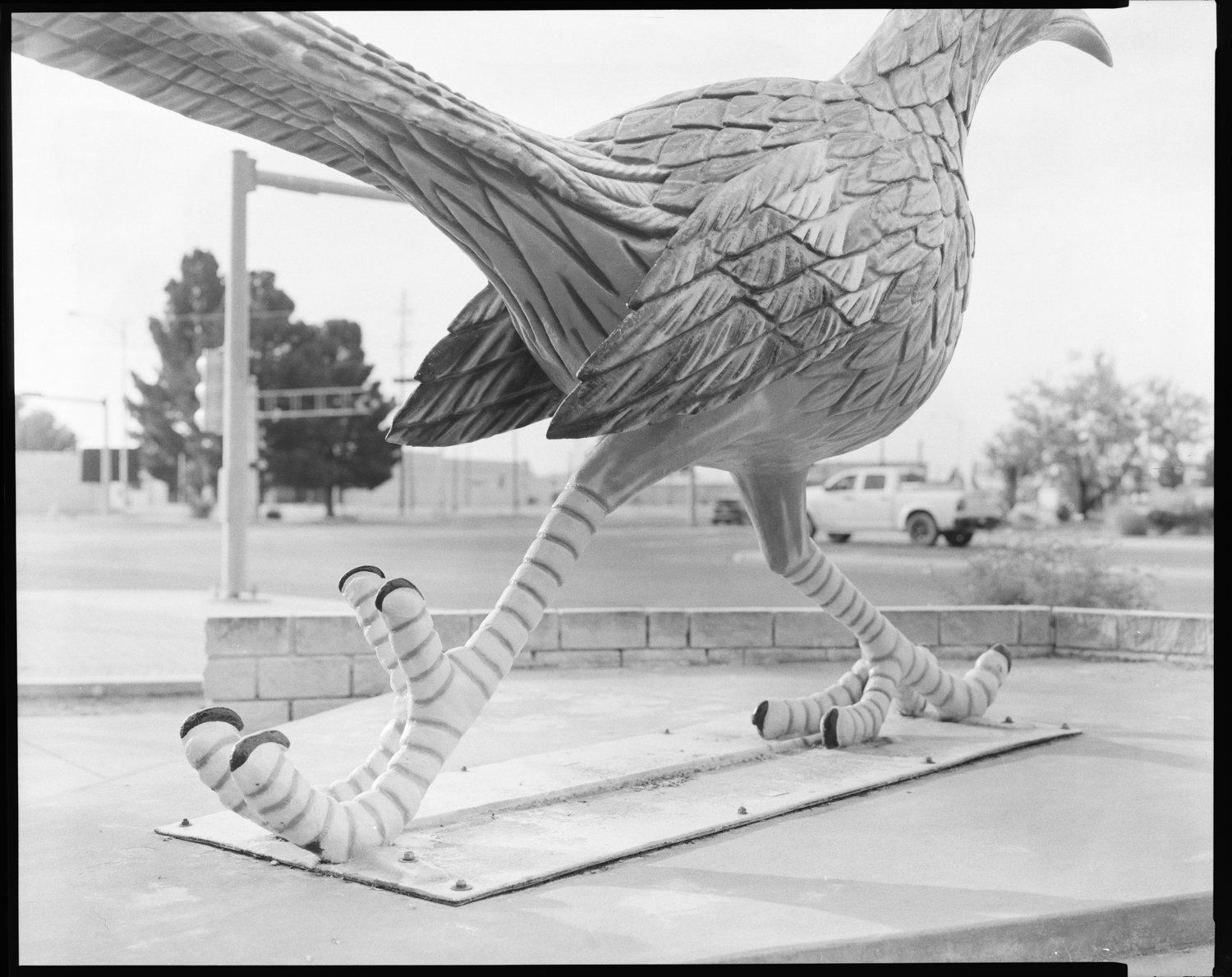
Sunset Limited
With a ticket, backpack, and several rolls of Kodak Gold, I watched Amtrak’s Sunset Limited coast to a stop at Alpine, 2 PM, would reach Los Angeles at 9 AM, December 2005.

Santa Elena Canyon
Big Bend, Texas

Barrack
Fort Lancaster, Texas

Paisano Pete
Fort Stockton, Texas

El Paso
El Paso, Texas
San Antonio to El Paso Road
The San Antonio to El Paso Road, beginning circa 1850, was a western mail route across Texas to the Pacific. It went west along US 90 and turned north to join the Devils River at Comstock, linking forts Lancaster, Stockton, and Davis—and historic sites Casa Navarro, Landmark Inn, and Magoffin Home.